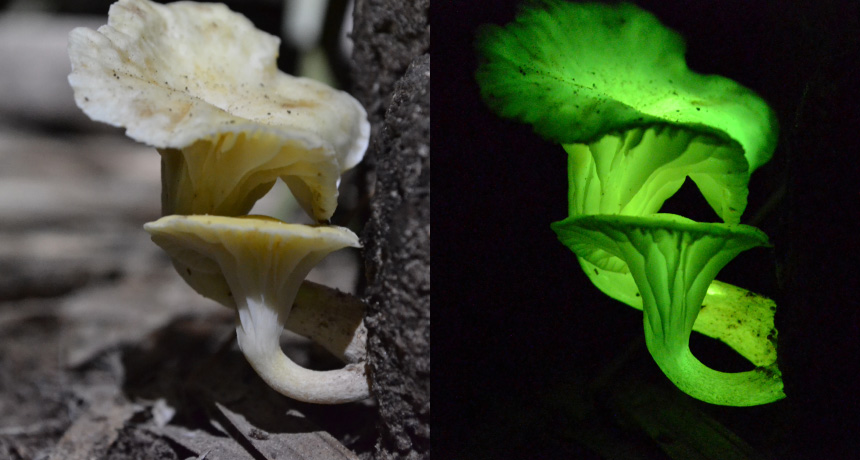How a mushroom gets its glow

The enzyme that turns on the light for a glow-in-the-dark mushroom seems “promiscuous.” But in a good way.
Researchers have worked out new details of how two Neonothopanus fungi shine softly green at night. The team had earlier figured out that the basic starting material for bioluminescence in these fungi is a compound called hispidin, found in some other fungi as well as plants such as horsetails. Those plants don’t spontaneously give off light, but in the two Neonothopanus mushroom species, an enzyme rejiggers a form of hispidin into a compound that glows.
The enzyme that turns a fungus into a natural night-light isn’t that fussy as enzymes go, says Cassius V. Stevani of the University of São Paulo in Brazil. He and colleagues can tweak the compound that the enzyme normally reacts with and still get a glow, the researchers report April 26 in Science Advances.
This easygoing chemistry has allowed the team to develop blue to orange glows instead of just the natural yellowish-green. These bonus colors might mark the beginnings of a new labeling tool for molecular biologists, the researchers say.